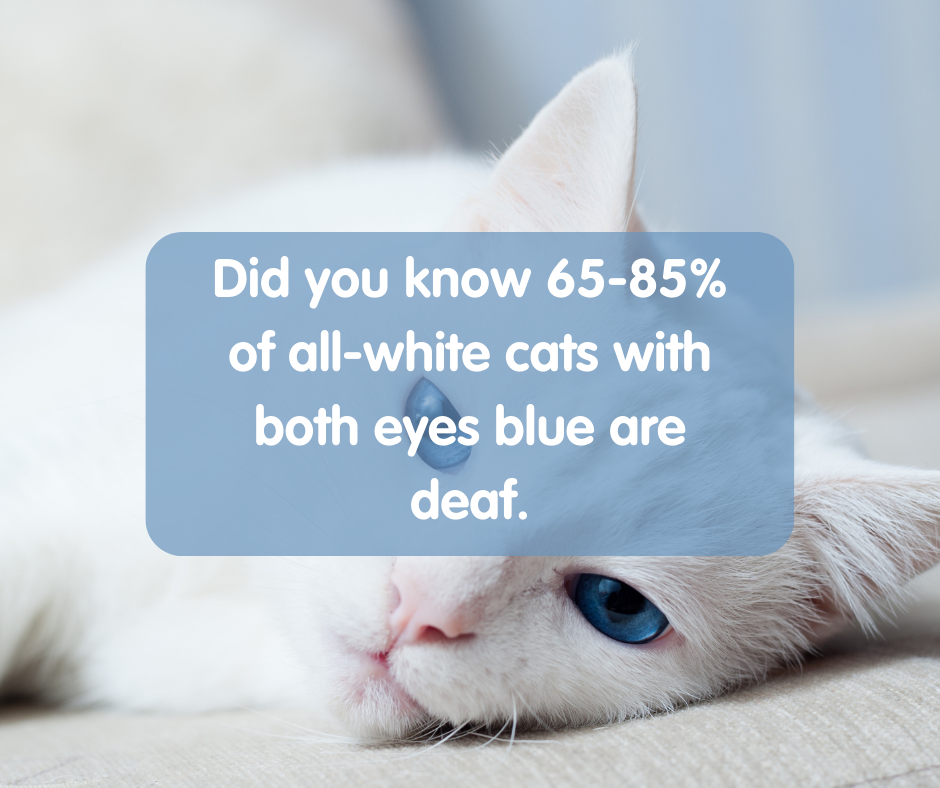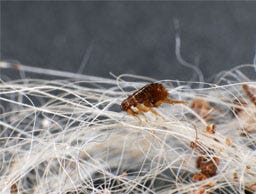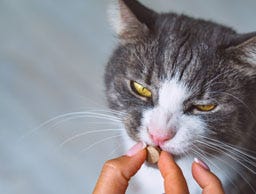How to Care for Your Cat’s Ears
As a pet owner, it’s your responsibility to maintain and keep track of your pet’s health, both inside and out, but even with regular health checks, some things can easily be missed, especially when there are no obvious signs of a problem. When it comes to cats, one of the most common missed issues is with their ears, in part because they’re not a fan of sitting still long enough for you to properly check, and also because they are very good at hiding when something is wrong.
In this article, we’re going to explain how to stay on top of your cat’s ear health by visual checks, and what you should do if something is wrong.

Healthy Cat Ears
The easiest way to check your cat’s ears is by giving them a visual check. You can do this by peeking inside of your cat’s ears while they sleep and keeping a close lookout for any signs of infection or wax buildup.
Your cat’s ears should be clean, odour-free, pale pink in colour and have a minimal accumulation of ear wax. If they are mucky you may need to use a pet-safe antibacterial ear cleanser like this Virbac Epiotic Ear Cleaner to get them clean and to help prevent infections which are usually caused by the accumulation of wax or debris.
Common Problems with Cat’s Ears
Most feline ear diseases occur when things such as dirt, debris, or wax accumulation in your car’s ear create an environment where yeast and bacteria can thrive. Anything that impedes the natural removal of your cat’s ear wax or reduces air circulation can result in the ear canal remaining warm and humid, which will encourage the growth of harmful organisms and lead to infections.
Cat Ear Infections
There are two common types of ear infections in cats:
Infections of the external ear canal (otitis externa)
Infections of the middle ear (otitis media)
Both of these infections can be caused by a number of things, including, by not limited to:
- Ear mites
- Bacteria build-up
- Yeast growth
- Injury
- Debris in the ear canal
If you notice any of the previously mentioned symptoms and think your cat may have an ear infection, then it’s crucial you contact your vet immediately for a consultation and advice on treatment. Not all ear infections can be treated with antibiotics, so it’s important a vet examines your cat’s ears to diagnose the cause of the problem and is able to prescribe the appropriate treatment.
Cat Ear Irritation
If your cat’s ears seem irritated, this can often be caused by an allergic reaction and, if left untreated, may lead to ear infections. Both ear irritation and infections can make your cat incredibly uncomfortable, so they should be examined by their vet as soon as possible.
Cat Ear Mites
As we’ve mentioned, cat ear mites are one of the main causes of ear infections in cats and are a much more common parasite than you might expect. Much like fleas, these tiny insects are highly contagious and can easily be passed from one cat together both outside of the home while they explore or even in the home. If you have a multi-cat household, it’s especially important that you keep all your cats up to date with their routine parasite prevention treatments to ward off ear mites as well as other creepy crawlies.
The most common sign of ear mites is persistently itching their ears. Ear mites also leave behind dark, crumbly debris which often looks like coffee grounds, much like fleas will leave debris in their coats. The best cause of action when it comes to ear mites is to use a routine parasite prevention treatment on your cat to kill mites before they can begin to irritate and infect your cat's ear. If your cat is already suffering from ear mites, then it’s important to seek advice from your vet who should prescribe either medicated ear drops or a more simple spot-on treatment to kill the mites and clear up the infestation.
Many non-prescription cat flea treatments will not treat ear mites or other parasites, so it’s important to consult a vet to get a proper diagnosis and prescription.
Treating Ear Infections in Cats
Ear infections can be treated in a number of ways depending on the root cause and what option is best will be decided by your vet following consultation and diagnosis.
Typically, your vet will prescribe a topical medication (such as ear drops) as well as an ear cleaner to be used alongside, both of which should be administered daily unless specified otherwise.
Ear cleaners are used to help clear ear wax and debris from the ear canal, disrupting the elements that make the optimum breeding ground for any bacteria and infection. Depending on the cause of your cat’s infection, the ear drops they are prescribed may be antibiotics (to treat bacterial infections) or antifungal (to treat fungal infections). These treatments may also have anti-inflammatory properties to make your cat feel more comfortable and hopefully stop any scratching which can continue to irritate their ear while it’s trying to heal.
How to Give Ear Drops to Cats
Giving medication to your pet is never an easy task, and cats can be especially awkward when it comes to administration since they rarely like to be held still for such a long time. We recommend not trying to give ear drops to your cat alone and having someone else on hand to help.
- Dress for the occasion. Administering ear drops to cats can be a tricky and messy ordeal, so it’s best to wear clothes you don’t mind getting some medication on such as gardening clothes. Make sure to keep some kitchen roll handy as well to clear up any missed drops.
- Read the bottle or information leaflet provided with the medication carefully. This is to ensure your cat is getting the correct dosage and you are applying the medication correctly. You may also want to practice removing the lid one-handed so you can make administration quick, drama-free and without your cat knowing what’s coming.
- First, warm the bottle of medication in your hands. Cold drops can come as a shock which can stress your cat out and make them try to escape.
- Gently restrain your cat but make sure not to grab them suddenly or hold them too tight. You want to stop them from running away without stressing them too much.
- Apply the required number of drops or a liberal amount of ear cleaner directly into your cat’s ear.
- Gently massage your cat’s ear for around 15 seconds to work the treatment deep inside the ear canal.
- Wipe away any excess fluid or discharge from the entrance of the ear using something clean, soft and dry ensuring to dry the outside of the ear flap as well. (Never used cotton buds or push anything into your cat’s ear as this will cause damage to your cat’s ear canal and lead to further problems)
- If you’re cleaning both your cat’s ears, repeat the process on the other ear. If you’re using ear drops, make sure to check with your vet if one or both ears need to be treated.

If your cat has had an ear infection for a long time that has gone untreated, there is also a chance they will require injections, tablets or even surgery to help treat the infection. This is a worst-case scenario that is best avoided as it can be very distressing for your cat. This is why the best cause of action for feline ear infections is always prevention.
Cat Ear Care
As well as checking your cat’s ears regularly for wax build-up and debris, you should also keep an eye out for any change in colour to the pinna (ear flap) and for signs of swelling. This can be a sign of haematoma which is an accumulation of blood in the pinna often caused by trauma (bite, scratch or bump) or infection.
Deafness in Cats
Deafness can also begin to develop in your cat as they age or can be a genetic trait that you will usually be aware of already. Sudden or unexpected deafness in a cat can also be a sign of infection and should be treated seriously. Some of the key signs of deafness in cats include:
- Not noticing when you enter the house
- Not responding to everyday sounds such as their name, loud noises, sound-making toys, or treat pots being shaken.
- Not being woken by loud noises
- Louder meowing
- Increased sleep
- Increased sensitivity to smells and temperature
If your cat is in good health, but still exhibits these symptoms, it could be a sign that they are deaf and you should consult your vet for further diagnosis. Having a deaf cat can be challenging, but there’s no reason they can’t live a happy and fulfilled life.

If your cat has recently had an ear infection, it’s recommended that you clean their ears regularly to prevent reinfection, and there are plenty of non-prescription cat ear cleaners available with antimicrobial properties to help keep the ear clean of bacteria and yeast so they remain healthy.
So long as you stay on top of your cat’s health and regularly check them for signs of dirt or build-up, you can prevent infections before they occur, keeping your cat happy and healthy! If you’re looking for an appropriate ear cleaner for your cat, check out our range for great offers on market-leading cat healthcare products to help maintain your cat’s health.
This post is an opinion and should only be used as a guide. You should discuss any change to your pet’s care or lifestyle thoroughly with your vet before starting any program or treatment.































